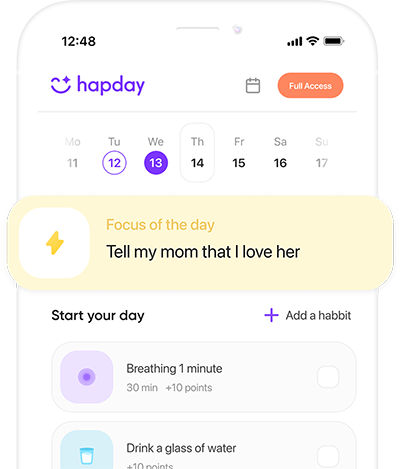Table of Contents
- What in the World Are PTSD Triggers?
- Pinning Down PTSD Triggers
- Navigating PTSD Triggers
- Crafting a Game Plan: All Yours
- Pillars of Support
- Nurture Thyself: Lifestyle Tweaks
- Don’t Wing It Alone
- Wrapping It Up
- References
What in the World Are PTSD Triggers?
So, here’s the deal with PTSD triggers: they’re like sneaky reminders—external or internal—that yank someone back to their nightmare scenario. Sounds, scents, and sights? Yep, all candidates. But it could also be a thought or feeling. Knowing these triggers is key! It gives folks a fighting chance to prepare and mellow out their reactions, helping them glide smoother through life’s chaos.
Some bigwigs in research spilled that about 60% of dudes and 50% of gals have had at least one traumatic trip in life. Crazy, right? Yet 7-8% of the crowd ends up with PTSD (a little tidbit from the National Center for PTSD, 2023).
Pinning Down PTSD Triggers
External Head-Scratchers
External stuff—they’re like eerie echoes, reminiscent of the trauma. What are they, you ask?
- Sensorial surprises: Think bang of fireworks or the smell of smoke. You get the drift—it’s like running smack into a memory.
- Situations that singe: Like the dreaded anniversary of “the day” or even hearing about something eerily similar on the news.
- Mingling mishaps: Busy places or even bumping into familiar faces connected to the heartbreak.
Internal Flares
Internal triggers, now that’s personal territory. We’re talking:
- Thoughts and feelz: Those nasty self-whispers or bad vibes—feelings of being stuck or fiery anger.
- Body blues: Racing heartbeats, those pesky sweaty moments, or any physical echoes of that dreadful event.
- Mind movies: Flashbacks or unwanted memory reruns that take you back.
Journaling—yep, good ol’ pen and paper—can unveil these tricky patterns and pinpoint what sets ‘em off.
Navigating PTSD Triggers
Once you’re clued in on what ruffles your feathers, it’s time for action. And I mean the kind that helps seize control over those adrenaline-charged stress spirals.
Cognitive-Behavioral Therapy (CBT)
Bet you’ve heard of CBT. It’s the heavy-hitter in the PTSD treatment world. It’s all about flipping those negative thought scripts and weaving some coping tricks into your arsenal. A glance at the Journal of Anxiety Disorders (2021) says it slashes PTSD symptoms in half—who’d argue with those odds?
Facing Fears: Exposure Therapy
Now, don’t run! Exposure therapy’s about meeting your demons, slowly—one cue at a time, in a safe cocoon. It’s like taming a beast, bit by bit. A roundup in Psychological Medicine (2022) echoed its success, with more than 70% of folks seeing a brighter side.
Mindfulness Magic
Mindfulness—being in the now, steady and unshaken. Think deep breaths, ease, and imagery. It’s like your mind’s escape plan. One study, Mindfulness (2023), flagged an over 30% dip in PTSD symptoms when practiced regularly over eight weeks. Pretty chill, huh?
Medication Ball
Sometimes, meds tag along with therapy. SSRIs like sertraline are the usual suspects, evening mood swings and dialing down anxiety—making the uphill battle a tad easier.
Crafting a Game Plan: All Yours
An action plan that’s all about you isn’t a bad idea:
- Know thy enemy: Log those triggers, get wise to ‘em.
- Coping kit: Team up with a therapist to whip up a mighty toolbox—could have CBT or mindfulness, or whatever fits.
- Find your tribe: Rely on understanding allies—be it family, friends, or support groups.
- Routine reviews: Keep tabs with your therapist, and course-correct as needed.
Pillars of Support
A trusty support squad is a golden ticket here. Ever joined a support group? Or leaned on loved ones? It makes a difference. The American Psychological Association (2022) says people with a solid social net are 40% more likely to bounce back. Makes sense, right?
Nurture Thyself: Lifestyle Tweaks
Self-care—it’s more than a trend. Think moving your body, eating well, and getting those zzz’s. Dodging bad habits and indulging in some calm-inducing activities? That’s the recipe for a trigger-shielded life.
Don’t Wing It Alone
DIY helps, but professionals—they’re the pros for a reason. Therapists got the skills and plans to cater to your quirks and struggles.
Wrapping It Up
Unraveling PTSD triggers—it’s a marathon, not a sprint. Patience is key, no rush jobs here. Spot the triggers, arm up with strategies, and grab professional help when in doubt. Reduce PTSD’s grip—you got this.
Take charge of your mental health. Download the Hapday app to start reclaiming your space. Don’t hit snooze on your recovery!
References
- National Center for PTSD. (2023). PTSD Statistics. Retrieved from their library.
- Journal of Anxiety Disorders. (2021). Insights on the power of CBT. Caught a glimpse in their archives.
- Psychological Medicine. (2022). The saga of exposure therapy success tales. Cruised through it.
- Mindfulness. (2023). How mindfulness plays in PTSD recovery. It’s on paper—somewhere.
- American Psychological Association. (2022). Recovering with a support net. Found it rather enlightening.

